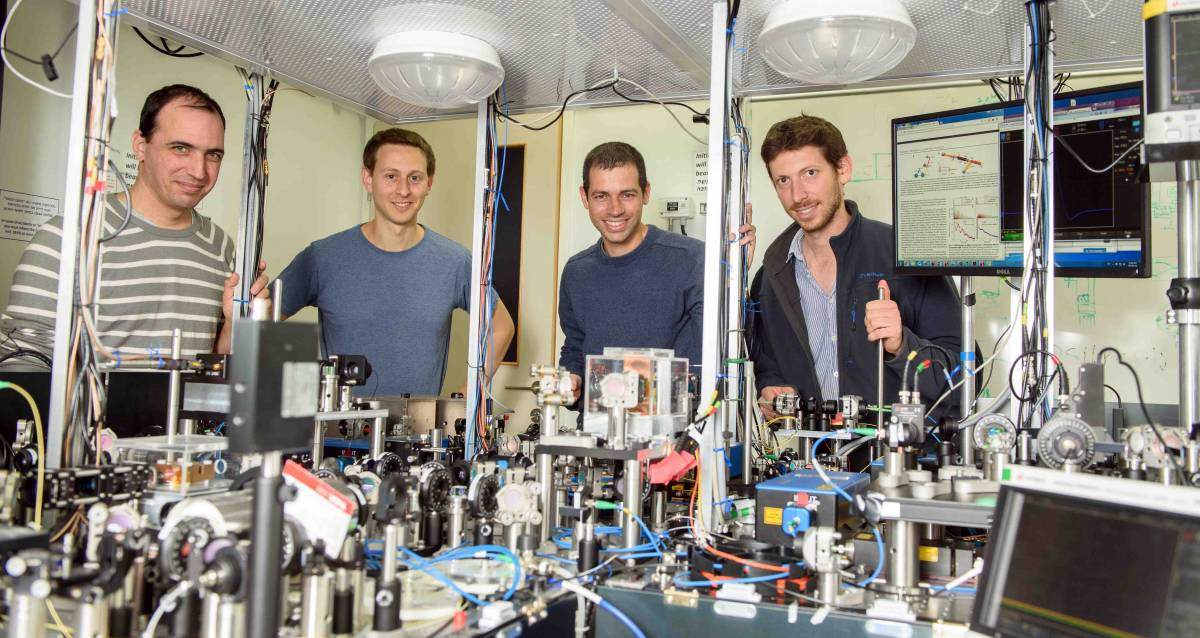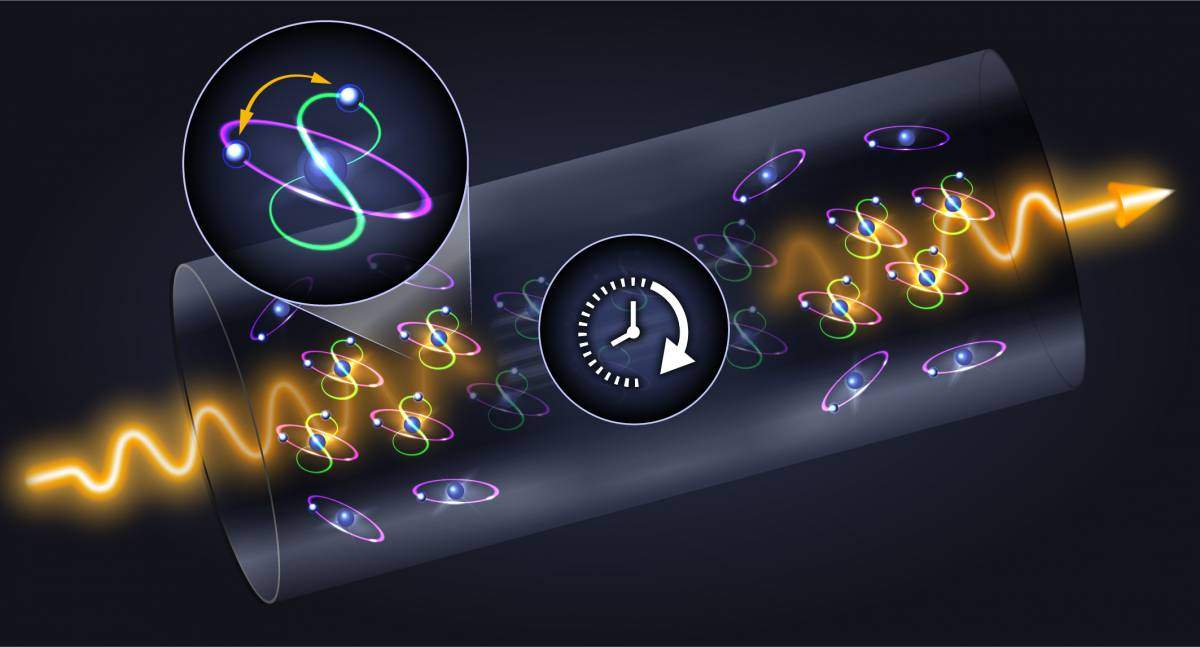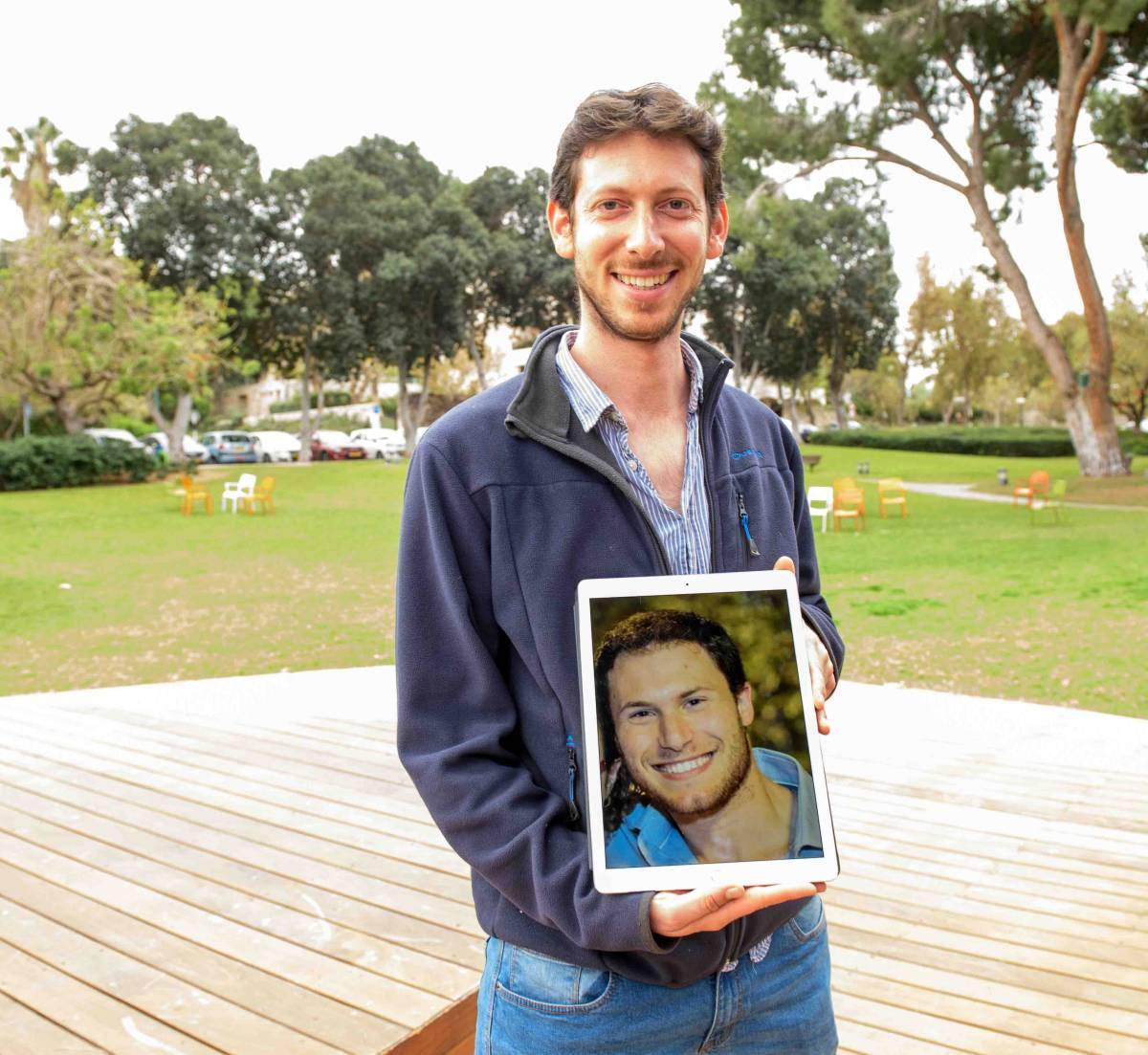Are you a journalist? Please sign up here for our press releases
Subscribe to our monthly newsletter:

How do you stop light in midflight and hold on to it – even for a fraction of a second? This ability could be crucial to such future quantum optical systems as secure communications or new kinds of information technologies. A group led by Dr. Ofer Firstenberg at the Weizmann Institute of Science recently demonstrated a method in which individual particles of light – photons – are trapped and released on demand in way that might, in the future, be used as memory for quantum information. A description of their quantum optical memory was recently published in Science Advances.
Photons can carry information in the same way that electrons do, explains Firstenberg, who is in the Institute’s Physics of Complex Systems Department. In addition, they can travel long distances, for example in optical fibers, without losing that information; so in future quantum memory and information technologies, photon-based systems may be better than electronic ones for certain kinds of communication and remote sensing. Like electronic systems, photon-based systems need to package and synchronize multiple bits of information. To create such “photon packages,” the timing of the photons must be controlled. Existing devices – photon sources – are able to shoot single photons, but they do so randomly. There is no way to predict exactly when the photon will escape the source or how much time will elapse until the next one is freed. One way to deal with this lack of control is to find a way of capturing the photons, holding them in one place and releasing them on demand – that is, temporarily storing particles of light.
Although Firstenberg and his group are not the first to store photons, they are the first to do so in a way that works at room temperature and is relatively fast, very efficient and noiseless (with no distortion in the information). They called their system FLAME, for Fast Ladder Memory. It consists of laser sources and a small amount of pure atomic gas – in this case, of the element rubidium. The electrons of the rubidium atoms act as the “photon memory,” and strong laser pulses are used for the writing and reading processes. The flying photons are first stored in electrons that have been excited – that is, the electrons’ orbit around the nuclei moves out a notch. Then some tens of nanoseconds later – long enough to synchronize the output from many fast photon sources – the memory is read, returning the electrons to their normal ground state and the photons to their flight.

FLAME, explain the scientists, is considered to be almost completely free of noise – unwanted disturbances that often plague such systems -- because what goes in is what comes out. “The photons that are released from the electrons are identical to those we put in – with the exact same properties and propagation direction. So something like one in 10,000 might be a photon we did not put there. As a quantum memory, the system is fantastic,” says PhD student Ran Finkelstein, who led this study together with Dr. Eilon Poem in Firstenberg’s lab.
These findings were published in Science Advances, together with the results of similar experiments conducted at Oxford University, UK.
Today, the experimental setup takes up a large table – mostly covered in lasers, mirrors and lenses, but the actual trapping takes place in a container the size of a thumb. Eventually, the scientists hope to miniaturize the process: An atomic gas containing billions of atoms can be contained in a sealed space of one cubic millimeter, and since the atoms return to their original state, it can be reused almost indefinitely. “We need only three elements – a photon source, a contained gas cloud and a strong laser,” says Finkelstein. “This is not a delicate system that works only in ultrahigh vacuum or at very low temperatures. Eventually we’ll be able to insert a system like this in something the size of a cell phone.”

Farther in the future, the idea of using photons to convey information in such processes as quantum computing, communications or sensing could involve one of the stranger aspects of quantum physics – a phenomenon known as entanglement. Famously called “spooky action at a distance,” when two particles are entangled, a change to one results in an instantaneous change in the other – meaning information is somehow shared non-locally (that is, there is no way information could have been passed from one to the other by standard means). “If the trapped photons were first entangled with other photons some distance away, this would be quantum communication in the true sense of the word – really based on principles of quantum mechanics that we can’t observe in the everyday world,” says Poem. Quantum communication, if it could be developed, would be almost impossible to tamper with, and thus researchers believe it could be especially useful for new kinds of encryption.
Eventually we’ll be able to insert a system like this in something the size of a cell phone
Firstenberg and his group plan to test entangled photons in the FLAME setup, and they have other ideas as well, for new experiments with their quantum optical system. For example, they intend to create more complex components, such as logic gates for the information carried by the stored photons.
“While we still don’t know which future quantum information systems will prevail,” says Firstenberg, “there are some things for which we know photons are best. For example, the recent discovery of gravitational waves in a distant galaxy relied on powerful optical sensors. Our communications are already sent by light waves through thin optic fibers; photon ‘quantum bits’ can travel in similar fibers. So quantum memory systems based on single photons may have applications in the not-too-distant future.” True quantum information processing with photons may be in the distant future, but the current research in Firstenberg’s lab in developing efficient and noiseless optical quantum memory is bringing that future closer.
Photons move at, well, the speed of light, and they are easily destroyed. Each and every one of us constantly destroys photons as our eyes take in and absorb light. And they are extremely faint, so it takes a very fine “net” to catch them, even for a fraction of a second. So why do scientists search for ways of trapping and using single photons? Photons can be varied and manipulated in ways that electrons cannot, and if they are left undisturbed they can travel through transparent materials or vacuum practically forever without losing their strength. Since single photons obey the laws of quantum mechanics, researchers hope to find ways of applying some of that “quantum weirdness” to create new types of computation, memory and especially communications. Several ideas for using photons to secure communications have been suggested. If a single photon were used as a “key,” for example, anyone trying to intercede in the transmission would destroy that key. Similarly, if photons at either end were entangled, a change in the photon at the receiving end would alert the recipient that tampering had occurred.
Dr. Ofer Firstenberg's research is supported by the Sir Charles Clore Research Prize; the Laboratory in Memory of Leon and Blacky Broder, Switzerland; and the European Research Council.